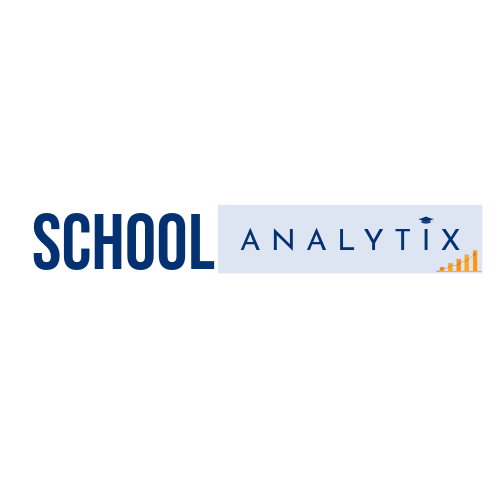In today’s digital age, data-driven decision-making has become increasingly crucial across various sectors, including education. With the advent of predictive analytics tools like Power BI, educational institutions now have the capability to leverage vast amounts of data to forecast trends, optimize resources, and enhance student outcomes. From predicting enrollment numbers to improving graduation rates, the applications of predictive analytics in education are manifold and transformative.
The Power of Predictive Analytics in Education
Predictive analytics involves the use of statistical algorithms and machine learning techniques to analyze current and historical data and make predictions about future events or trends. In the realm of education, predictive analytics can provide valuable insights into student behavior, academic performance, and institutional effectiveness.
By harnessing the power of predictive analytics, educational institutions can:
Forecast Enrollment Trends: One of the primary challenges for educational institutions is predicting future enrollment numbers accurately. With predictive analytics tools such as Power BI, administrators can analyze historical enrollment data, demographic trends, and other relevant factors to forecast future enrollment with greater accuracy. By identifying potential fluctuations in enrollment, institutions can adjust their resources, staffing, and facilities accordingly, ensuring optimal utilization and efficiency.
Improve Student Retention and Graduation Rates: Predictive analytics can play a significant role in identifying students who may be at risk of dropping out or failing to graduate on time. By analyzing various indicators such as academic performance, attendance records, and socio-economic background, institutions can intervene proactively to provide targeted support and resources to at-risk students. This personalized approach can help improve student retention rates and ultimately boost graduation rates, thereby enhancing the overall success of the institution.
Enhance Curriculum Development: Predictive analytics can also inform curriculum development and course offerings by identifying emerging trends, student preferences, and market demands. By analyzing data on course enrollments, student feedback, and labor market trends, institutions can tailor their curriculum to better align with the needs and interests of students and employers. This data-driven approach ensures that educational programs remain relevant, competitive, and responsive to changing demands in the workforce.
Optimize Resource Allocation: Educational institutions often grapple with resource constraints, whether it’s budgetary limitations, faculty availability, or classroom space. Predictive analytics can help optimize resource allocation by analyzing historical data on resource utilization, student demand, and performance metrics. By identifying inefficiencies and areas for improvement, institutions can allocate resources more effectively, maximizing the impact of their investments and enhancing the overall quality of education.
Leveraging Power BI for Predictive Analytics in Education
Power BI, Microsoft’s business analytics tool, offers a comprehensive suite of features and capabilities for conducting predictive analytics in education. From data visualization to advanced machine learning algorithms, Power BI empowers educators and administrators to extract actionable insights from their data and make informed decisions.
Here’s how educational institutions can leverage Power BI for predictive analytics:
Data Integration: Power BI allows users to connect to a wide range of data sources, including student information systems, learning management systems, and external databases. By integrating disparate data sources into a single unified platform, institutions can gain a comprehensive view of student performance, engagement, and outcomes.
Data Modeling: With Power BI’s data modeling capabilities, users can create sophisticated data models that capture the complex relationships between various factors influencing student success. By defining key performance indicators (KPIs), building predictive models, and conducting hypothesis testing, educators can uncover meaningful insights into student behavior and academic performance.
Predictive Modeling: Power BI offers built-in machine learning algorithms and predictive modeling tools that enable users to forecast future outcomes based on historical data. Whether it’s predicting enrollment numbers for the upcoming semester or identifying students at risk of dropping out, Power BI provides the tools necessary to develop accurate and reliable predictive models.
Data Visualization: One of Power BI’s strengths lies in its intuitive data visualization capabilities. With interactive dashboards, charts, and graphs, educators can communicate complex data insights in a clear and compelling manner. Whether it’s tracking student progress, analyzing enrollment trends, or monitoring graduation rates, Power BI’s visualizations make it easy to understand and interpret data at a glance.
Case Study: Implementing Predictive Analytics at XYZ University
To illustrate the practical applications of predictive analytics in education, let’s consider a hypothetical case study of XYZ University, a large public institution seeking to improve its student retention and graduation rates.
Using Power BI, XYZ University analyzes historical data on student demographics, academic performance, and engagement metrics to identify students at risk of dropping out. By leveraging predictive models, the university proactively intervenes to provide targeted support and resources to at-risk students, such as academic advising, tutoring services, and financial assistance.
Over time, XYZ University observes a significant improvement in student retention and graduation rates, thanks to its data-driven approach to student support and intervention. By harnessing the power of predictive analytics, the university not only enhances student outcomes but also strengthens its reputation as a student-centered institution committed to academic success.
Conclusion
In conclusion, predictive analytics holds immense potential for transforming education by providing actionable insights into student behavior, academic performance, and institutional effectiveness. With tools like Power BI, educational institutions can harness the power of data to forecast enrollment trends, improve student retention rates, and enhance overall educational outcomes.
By leveraging predictive analytics, educators and administrators can make more informed decisions, allocate resources more effectively, and ultimately empower students to succeed in their academic endeavors. As the field of predictive analytics continues to evolve, educational institutions must embrace data-driven approaches to remain competitive, innovative, and responsive to the needs of students and society at large.
